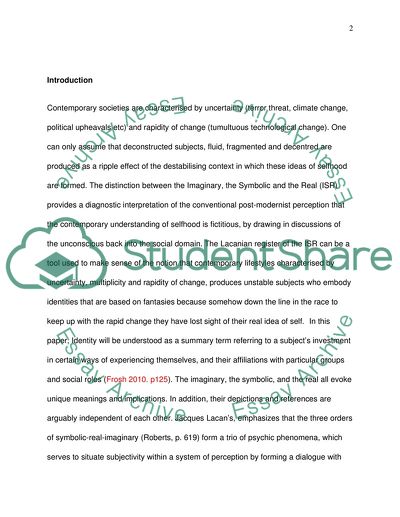Cite this document
(Our Understanding of Identity and Desire in Contemporary Society Personal Statement, n.d.)
Our Understanding of Identity and Desire in Contemporary Society Personal Statement. Retrieved from https://studentshare.org/social-science/1854899-how-does-the-distinction-between-the-imaginary-the-symbolic-and-the-real-contribute-to-our-understanding-of-identity-and-desire-in-contemporary-society
Our Understanding of Identity and Desire in Contemporary Society Personal Statement. Retrieved from https://studentshare.org/social-science/1854899-how-does-the-distinction-between-the-imaginary-the-symbolic-and-the-real-contribute-to-our-understanding-of-identity-and-desire-in-contemporary-society
(Our Understanding of Identity and Desire in Contemporary Society Personal Statement)
Our Understanding of Identity and Desire in Contemporary Society Personal Statement. https://studentshare.org/social-science/1854899-how-does-the-distinction-between-the-imaginary-the-symbolic-and-the-real-contribute-to-our-understanding-of-identity-and-desire-in-contemporary-society.
Our Understanding of Identity and Desire in Contemporary Society Personal Statement. https://studentshare.org/social-science/1854899-how-does-the-distinction-between-the-imaginary-the-symbolic-and-the-real-contribute-to-our-understanding-of-identity-and-desire-in-contemporary-society.
“Our Understanding of Identity and Desire in Contemporary Society Personal Statement”, n.d. https://studentshare.org/social-science/1854899-how-does-the-distinction-between-the-imaginary-the-symbolic-and-the-real-contribute-to-our-understanding-of-identity-and-desire-in-contemporary-society.


